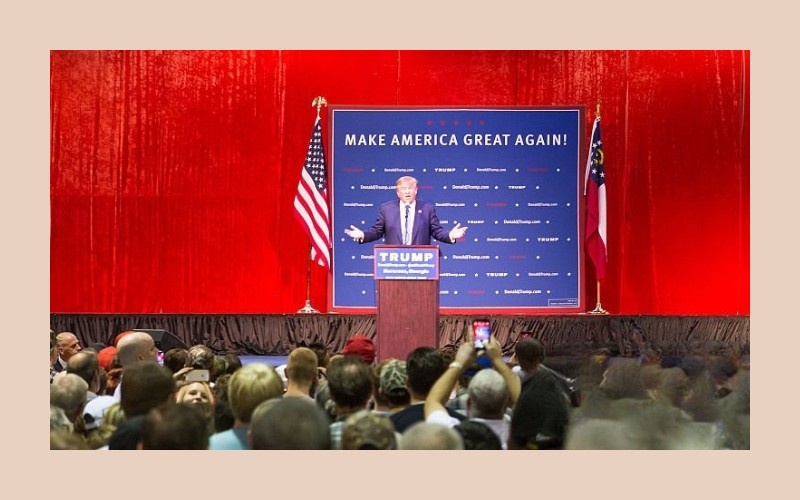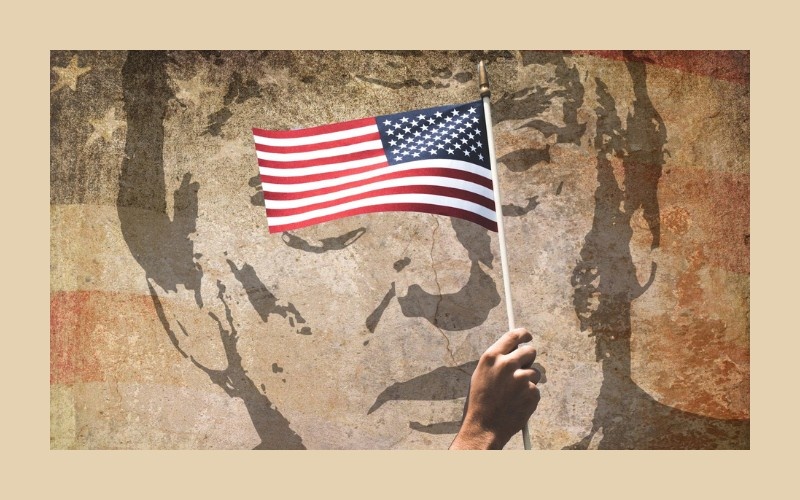President of the United States Donald Trump made a shocking and provocative choice by stating new tariffs on imports from 185 countries which has led to global worry and market fluctuation. The fresh regulations require that all imported goods be subjected to a basic tariff rate of 10%, while for certain countries the tariffs are much higher, for instance, China (104%), the European Union (20%), India (26%) and numerous South Asian countries with the rates of from 24% to 49%. The initiative, branded as a task to secure the U.S. production and to correct trade deficits, has brought about a series of negative economic impacts on the world stage.
China: A Full-Blown Trade Battle
As a response, China has set a tariff of 34% on America’s products. The ongoing reaction is a clear repetition of early trade wars but on a broader scale. Major sectors that are struggling are electronics, consumer goods, and heavy machinery. Analysts with expertise in economy suggest that this will probably cut China’s GDP growth by as much as 2% in the short term, which is a big blow to the world’s second-largest economy.
China has already conducted discussions about various measures these discussions having been on a high level, and according to Chinese officials, they are willing to “fight till the end.” Places dealing with manufacturing have become tense from the situation, while companies like Apple and Tesla, which are examples of large companies that greatly depend on Chinese supply chains, face high costs. The conflict that has been renewed now poses a threat of a protracted economic uncertainty in both countries that might also spread to Europe and Latin America.
India: Pharma and Trade Under Pressure
India, faced with a 26% tariff, is seeing a decrease in various industries, plain for all in the case of pharmaceuticals. It is no secret that Indian pharmaceutical companies are the major suppliers of the generic medicines that are distributed throughout the United States. The high tariffs not only cause the prices to go up, less affordable drugs are also likely to disappear from the American shelves. The additional deficit might be the turning point for Indian companies that are operating on a narrow margin.
The government representatives tend to be optimistic about reaching a growth rate of 6.3% – 6.8% for fiscal years 2025-26, with the possibility of even 7%, provided that oil prices remain below $70 per barrel in the international market. Although India is in the dialog with the U.S., around the situation of that time, the business community is preparing for the worst.
Southeast Asia: From Opportunity to Obstacle
Countries such as Vietnam, Thailand, Malaysia, and Cambodia once offered the best prospects for manufacturing as businesses shifted production out of China. But Trump’s tariff blitz has included all these countries, with duties ranging between 24% and 49%.
The most affected sectors in these countries are footwear, apparel, and electronics. Nike and Adidas-global brands that had shifted a large chunk of their manufacturing to Southeast Asia-are now compelled to reconsider their supply chains once again. Investors in those regions become increasingly anxious, while local economies face the consequences in terms of unemploymentjobs exports are also reduced and there is less foreign direct investment.
European Union: Renewed Trade Tensions
The European Union carves out an immediate impact on its automotive sector, wine sector, and machinery sectors with a 20% tariff. German car manufacturers are particularly worried about the high price increase that their products are going to experience in the US market.
Officials from the EU have expressed disappointment and are exploring countermeasures to be Tariffs on American technology and agriculture. A lawsuit through the World Trade Organization is also being considered, but such cases take months, if not years, to resolve. This rescues the already strained transatlantic trade relationship, which again comes under the spotlight, reminding many of the earlier tensions during Trump’s first presidency.
Global Markets React
The news was not taken lightly by world financial markets. Almost all stock indices fell sharply. As for the S&P 500 and Nasdaq Composite, they were down big, but Asian markets lost as much as 4%. European bourses that were already heavy with reduced industrial output experienced more sell-offs.
Analysts say such harsh increased tariffs would raise the US part of the consumer price even more which is itself a stimulus of inflation. That complicates monetary policy even more at a time when the Federal Reserve is still in the midst of combating inflation pressures created in the wake of the pandemic. Many also are concerned that tariffs could trigger a global recession, especially if they are imposed too broadly in retaliation.
Who Could Gain?
While the fallout is having an adverse effect in many parts of the world — a few do stand to gain, unexpectedly. Brazil can gain at the margin by taking up the agricultural export slack to China — notably in soybeans and beef. Egypt and Morocco could also pick up some business in textiles because of favorable trade agreements and a shrinking competitive landscape.
Turkey and Singapore are other potential winners. Turkey might increase its function as a producer and a logistician, particularly in Europe and the Middle East. Singapore, which is an international financial and shipping center, could see more movement as companies divert supply chains and look for trade routes.
Supply Chain Disruptions and Long-Term Strategy
Bringing back tariffs has increased worries about the already shaky global supply chains. Over the last ten years, globalization has built a connected trade system with manufacturing, logistics, and services spread all over the world. These new trade rules using tariffs are now challenging that system. They are forcing companies to rethink their plans for sourcing materials, deciding where to set up their main centers, and managing their logistics and services globally.
Companies just beginning to recover from supply chain troubles caused by COVID-19 now face new disruptions. Industries such as automotive, semiconductors, and consumer electronics could experience longer wait times, higher shipping costs, and shifts in production locations. These issues might encourage “friendshoring,” where companies choose supply chain partners in countries with fewer political risks.
Impact on Small and Medium Enterprises (SMEs)
Big companies can handle changes better due to their size, but small and medium-sized businesses (SMEs) will face more challenges. These smaller businesses often rely on importing raw materials or finished products from other countries. Because of this, they might struggle to keep their profits steady. They may also have to raise prices, but customers might not want to pay more.
Some small businesses are already dealing with problems like shipments getting canceled or contracts being suddenly changed. Retailers and manufacturers in the U.S. who depend on parts from Asia and Europe are also likely to struggle. They will have difficulty keeping their businesses running smoothly and offering prices that can compete with others.

WTO and the Future of Global Trade Rules
The unilateral approach of Donald Trump has launched public examinations regarding the role and effectiveness of the World Trade Organization (WTO). Several experts claimed that the WTO fails to block instances of unfair trade behavior. The decision to disregard WTO rules can lead to the deterioration of worldwide trade standards according to some analysts.
Several nations consider taking legal actions which will make the WTO an essential organization. The WTO faces difficulty with enforcement of its decisions because powerful economies often disregard its judgment. Various countries will probably shift their trade practices toward bilateral agreements and regional pacts which means they will leave behind multinational bodies.
Public Sentiment and Domestic Reactions
The domestic implementation of these tariffs has received a wide range of responses from within the United States. Laborers working in standard manufacturing plants are showing delayed yet hopeful attitudes regarding the measures. Many workers at Ohio steel plants have been hoping for side support for years according to one employee. Labor unions maintain different positions about the protectionist measure yet some of their members expect positive effects for manufacturing employment.
The essential products starting with prescription drugs and electronics may become too expensive for both low- and middle-income American families according to consumer protection organizations. According to economic experts protectionism produces minimal advantages for customers in extended periods.
Geopolitical Realignments and Alliances
The ongoing trade tensions create conditions that drive nations to establish new political groupings. Countries who encounter substantial trade barriers must consider establishing new business agreements as well as trading blocs. ASEAN nations hold the opportunity to expand their trading connections both with member countries and the European Union. China is set to ramp up efforts through the Belt and Road initiative and enhance dialogue with African and South American countries to reduce dependency on American markets.
The U.S. could strengthen diplomatic ties with territories that escaped or received minimal trade impact from the tariffs to develop secure supply networks within peace-friendly geographic sectors.
Tariffs and the Tech Industry: A Silent Casualty
The technological industry stands as one of the least obvious yet most impacted business domains. International regions including Asia and Europe supply most of the raw materials that the U.S. technology industry requires to function. The new tariffs have escalated the prices of circuit boards and other essential components and rare earth metals drastically. Intel together with Qualcomm and innovative startups will feel the negative impact of these price hikes because they use price competition as a key driver for innovating.
New prices from the tech sector will increase between 10% and 25% for laptops and smartphones and networking devices within the upcoming half-year period. Companies running their operations across multiple countries via international teams will face cost challenges because of their diminished buying power as well as currency shifts. Specialists believe these developments will reduce creative progress and raise product prices and create bigger digital inequity between urban and rural areas particularly within educational institutions. The digital economy’s increasing growth stands at risk of being suffocated by unanticipated adverse effects that would negatively impact this nation’s key expansion sector.
Conclusion
The aggressive new tariff policy that Trump introduced marks an earth-shifting transformation within worldwide economic structures. The plan to defend American business as well as restore trade equality has created broad economic consequences throughout international markets. Current events show how the ongoing supply chain disruptions in Southeast Asia together with EU diplomacy tensions deliver economic challenges to China and India.
The strategic approach will demonstrate its enduring benefits or initiate a disruptive phase of economic instability through the next several months. Observation and adaptation to the new trade conditions are how different parts of the world are responding to the abrupt market changes.
#narendramodi #internationalnews #trump #donoldtrump #globalrippels














